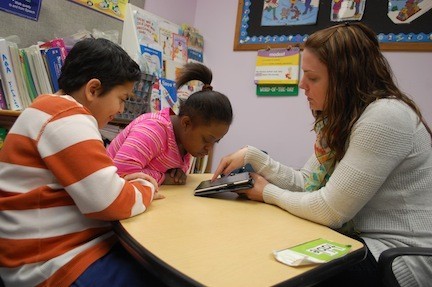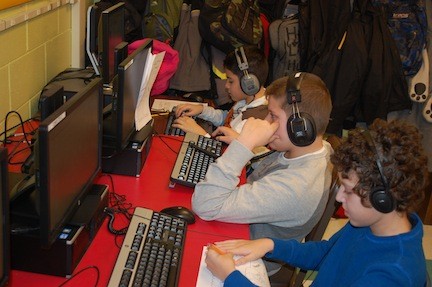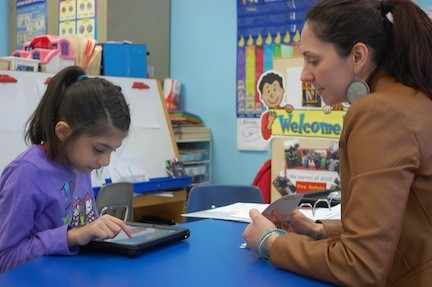Technology grows to meet student needs
Part 2 in a series
Computers have been in schools for the better part of three decades, continuing to evolve as a learning tool as new and more dynamic programs are introduced. In District 30, computers can be found in every classroom, but that’s just the tip of the iceberg.
While technology is readily available to every one of the nearly 1,500 elementary school students in the district, it is particularly beneficial to children in the special education program. Some students even use these resources to accomplish tasks they can’t do on their own.
Saera Khan has a child with autism in third grade, enrolled in a special education class for children with developmental disabilities at Forest Road School. Her daughter, Ansa, has limited verbal communication skills, but now uses an iPad to speak for her.
Khan said that her daughter was growing frustrated by her inability to communicate, but since getting the iPad, she is calmer and happier. As Ansa’s spelling and keyboarding skills get better, her communication with others can grow.
The iPad has become a popular tool for students in speech therapy. Sharon Benyaminy said that there are numerous applications, or “apps,” that she can choose to help children with their language development. Many of these apps even can keep track of a child’s progress.
Colleague Jennifer Kozub said that she doesn’t just buy apps for the point of having them. She does research first, to see what skills each app targets and if it would be appropriate based on the needs of her students. Kozub said she spends a lot of time reading up on apps on blogs and in professional magazines.
“We don’t have unlimited funds,” she said, “so we have to pick ones that are most beneficial for our students.”
Benyaminy said that iPads, because of their interactive nature, are a motivational tool for her students. “They don’t see it as learning,” she said. “They look at it as fun. They think that they’re playing.”
Kozub explained that the iPad hasn’t replaced traditional therapy — she still uses a lot of printed material — but it has enhanced it. “It’s something that I use a lot,” she said of it iPad, “but to me, it’s not an end all.”

 50.0°,
Fair
50.0°,
Fair 











